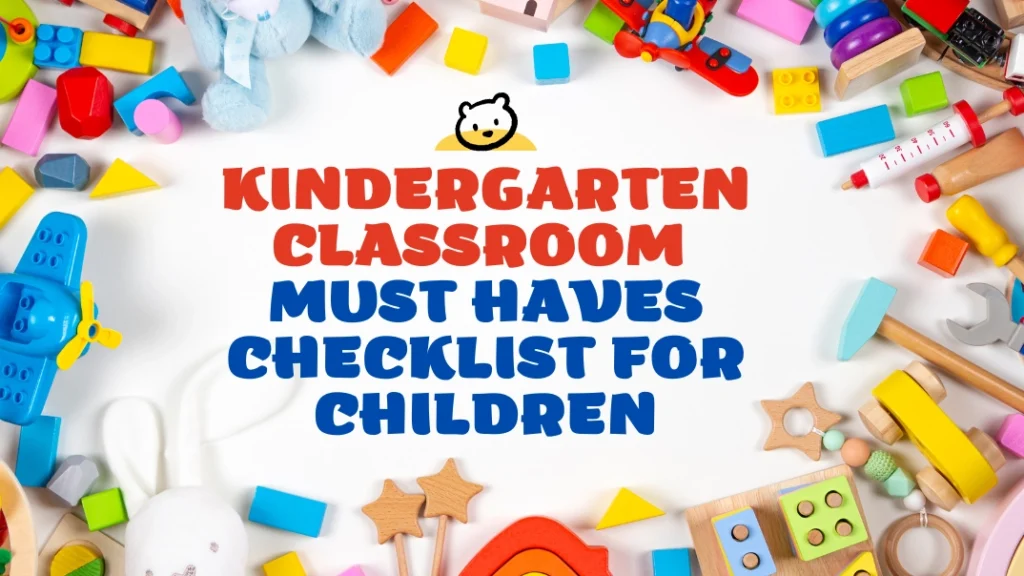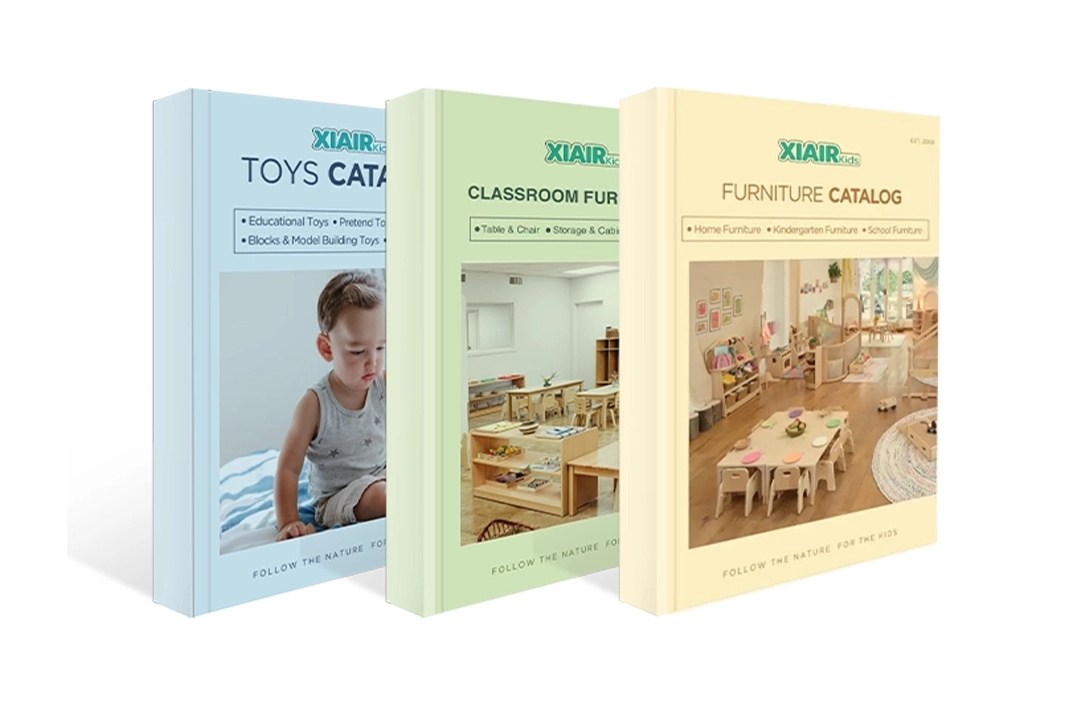Setting up a classroom—whether for a preschool, daycare, or kindergarten—can feel overwhelming. With so many choices and limited budgets, how do you know which items are essential? Many new teachers or early childhood educators scramble to create an effective learning environment without a clear checklist of must-have classroom supplies.
Worse yet, overlooking key items in your kindergarten classroom setup can lead to clutter, chaos, and even safety concerns. A poorly prepared classroom may disrupt learning, hinder routines, and frustrate teachers and students. Without the right preschool classroom must haves, even the most passionate teacher may struggle to deliver engaging, structured instruction.
That’s why we’ve compiled this comprehensive guide of kindergarten classroom must haves and preschool classroom must haves—organized to help you design a functional, inspiring, and well-managed classroom. Whether you’re furnishing a daycare space, stocking a preschool, or launching your very first kindergarten classroom, this guide will help you focus on what matters most: creating a safe, fun, and developmentally appropriate environment where children can thrive.
Introduction
Now that we’ve examined why having the right classroom setup matters, let’s explore exactly what you need. This guide is divided into practical sections highlighting the most essential preschool and kindergarten classroom must-haves, thoughtfully chosen to support young learners’ daily routines.
We’ll discuss each part of the classroom—learning areas, play zones, organization systems, safety items, and more—so you can create a functional, welcoming, and easy-to-manage space. Whether you teach toddlers or kindergartners, these must-haves will help you create a classroom that works for you and your students.
Preschool and Kindergarten Classroom Must Haves by Zone
Designing an early childhood classroom means thinking beyond individual supplies and creating zones that support different types of learning, movement, creativity, and care. By organizing your classroom into functional areas, you can better meet the needs of preschool and kindergarten students while making daily routines easier for teachers.
In the sections below, we’ve broken down the most important preschool classroom must haves and kindergarten classroom must haves by zone. From learning spaces to quiet corners, and storage to sensory play, each part of the room plays a role in how children explore, interact, and grow.
Essential Furniture Kindergarten Classroom Must Haves for Kids
Designing a preschool or kindergarten classroom begins with furniture—not just any furniture, but pieces that actively support movement, interaction, and independent learning. For early learners, furniture isn’t just a place to sit—it’s a tool for building routines, spatial awareness, and confidence. This section explores the essential furniture must haves that help teachers manage their day and students feel safe and engaged.
- Kid-Sized Tables and Chairs
Child-sized seating is fundamental. It allows children to sit comfortably with their feet touching the floor, promoting good posture and focus. Choose durable tables with rounded edges and adjustable legs to accommodate different activities—group work, snack time, or hands-on projects. These are among the most basic but powerful preschool classroom must haves because they physically anchor learning spaces. - Circle Time Rug
A dedicated area for circle time is central to group learning and classroom structure. A large, soft rug with visual markers (like alphabet letters or shapes) provides children with personal space and helps with organization. Circle rugs also support classroom routines and are recognized as a must-have classroom item for social-emotional development and early literacy. - Flexible Seating Options
Today’s classrooms need to adapt to varied learning styles and sensory needs. Offer bean bags, wobble stools, floor cushions, and scoop rockers. These kindergarten classroom must haves give students choice in how they engage, while supporting movement breaks, focus, and autonomy—especially important in special education classroom settings. - Teacher Desk and Private Workspace
Often overlooked, the teacher’s area is a critical command center. It should include a secure drawer, a flat workspace for planning, and nearby storage for files, assessments, and personal items. For new educators, this is one of the top teacher classroom must haves that helps reduce daily chaos. - Storage Benches and Room Dividers
These multi-use items define classroom zones while providing storage. Use low benches with bins underneath to hold learning tools or personal items. Open shelves or mobile dividers with cubbies help break the space into learning centers while keeping everything visible and accessible. - Dramatic Play Furniture (Optional but Ideal)
Small kitchen sets, puppet theaters, and doll cribs help create meaningful play opportunities. While not always considered “essential,” many experienced educators consider these must-haves for kindergarten classroom environments that support imagination and social development.
A well-furnished classroom does more than look complete—it functions smoothly, minimizes transitions, and supports every child’s need to move, engage, and belong. Investing in the right pieces up front for new and seasoned teachers alike turns the classroom into a teaching partner.
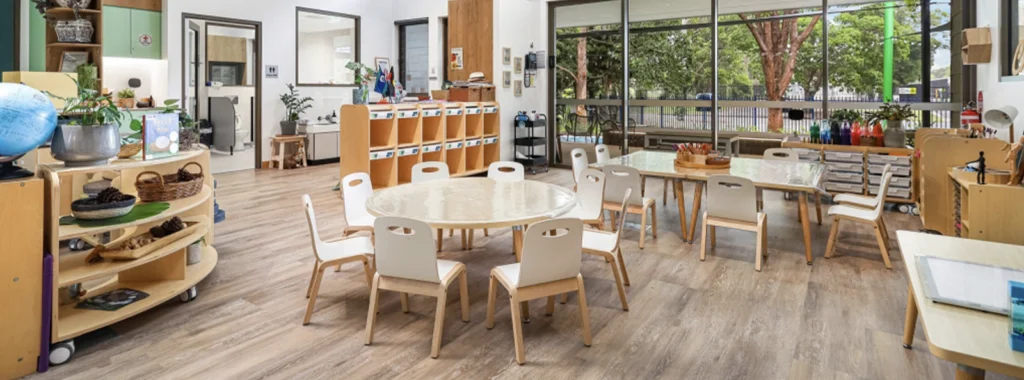
Storage and Organization Solutions for Classroom Essentials
Organization is the silent backbone of a well-run early childhood classroom. When materials, personal items, and learning tools have clear, accessible homes, students know what to expect, and teachers save valuable time. Whether preparing a preschool classroom or refreshing your kindergarten space, these organization must haves are key to smooth, stress-free days.
- Open Shelving Units
Sturdy, low-to-the-ground shelving units allow children to access toys, books, and supplies independently. This fosters responsibility and independence, essential skills at any age. Choose units with clear sightlines to monitor usage and categorize by activity zone to reduce confusion. These are non-negotiable must-haves for preschool classroom layouts.
- Cubbies for Personal Storage
Each child should have a labeled cubby or locker to store backpacks, coats, and daily folders. These cubbies reduce mix-ups and encourage routine. Kindergarten classrooms are also perfect for teaching organization skills, one of the foundational life habits.
- Labeled Bins and Baskets
Use bins with words and pictures to help non-readers quickly identify where items belong. This supports early literacy while making cleanup time efficient. Bins are classic classroom organization must-haves, especially helpful in special ed classrooms where visual cues are crucial.
- Rolling Supply Carts
Flexible classrooms need mobile tools. A three-tier cart can hold art supplies one day and math manipulatives the next. For small spaces, these carts offer high utility without permanent footprint—a must have for kindergarten classroom versatility.
- Color-Coded Center Storage
Assign a color to each learning center (e.g., blue for blocks, green for reading), and use matching bins. This helps with classroom flow and supports self-directed learning. This is one of the easiest yet most effective classroom setup hacks for new teachers.
- Teacher Organization Zone
Don’t forget your own needs—file organizers, binder shelves, and locked drawers for assessment data or sensitive items are essential. This is a core teacher classroom must have that supports efficiency and protects privacy.
With strong systems, classroom organization becomes less about “tidying up” and more about teaching structure, responsibility, and independence. In early childhood classrooms, your environment teaches just as much as you do—set it up wisely.
Don’t just dream it, design it! Let’s chat about your custom furniture needs!
Must-Have Books for a Kindergarten Classroom Library
A classroom library is more than just a quiet corner—it’s where young learners build foundational language skills, develop imagination, and foster a lifelong love of reading. Creating a book-rich environment is a top priority for preschool and kindergarten classrooms. A well-thought-out library supports literacy, emotional development, and independent exploration, making it one of the most essential classroom must haves.
- Age-Appropriate Picture Books
Books with simple language, vibrant illustrations, and relatable themes help preschoolers and kindergartners engage. Must-have titles include classics like The Very Hungry Caterpillar, Brown Bear, and Chicka Chicka Boom Boom. These are non-negotiable must have books for kindergarten classroom environments where literacy begins.
- Interactive and Sensory Books
Lift-the-flap books, touch-and-feel pages, and sound buttons bring stories to life. These formats are perfect for pre-K classroom must haves, helping children improve motor skills and attention span while having fun with books.
- Thematic and Seasonal Books
Rotate books based on current classroom themes or seasons—autumn leaves, emotions, families, or holidays. This keeps the library fresh and allows books to support ongoing lessons. For teacher classroom must haves, a rotating thematic shelf adds incredible teaching flexibility.
- Books Featuring Diversity and Inclusion
Books that reflect different cultures, abilities, and family types help students see themselves and others in the stories. These stories build empathy and normalize differences for special education classrooms or inclusive settings.
- Cozy, Accessible Reading Area
Design your library space with soft seating—bean bags, rugs, or floor pillows. Use low, front-facing shelves so books are visible and inviting. Add small touches like lamps, plush toys, or story baskets. These environmental touches double as classroom decor must-haves, mainly when used to set a calming tone.
- Read-Aloud Tools and Props
Storytime tools like puppets, storyboards, and felt characters can enhance read-aloud sessions. This teacher must have classroom reading time to boost comprehension and participation.
A strong classroom library doesn’t require hundreds of books—it requires the right ones. The goal is to create a space that’s as engaging as it is educational. And don’t forget to check out our complete guide to creating inspiring spaces: Preschool Bulletin Board Ideas
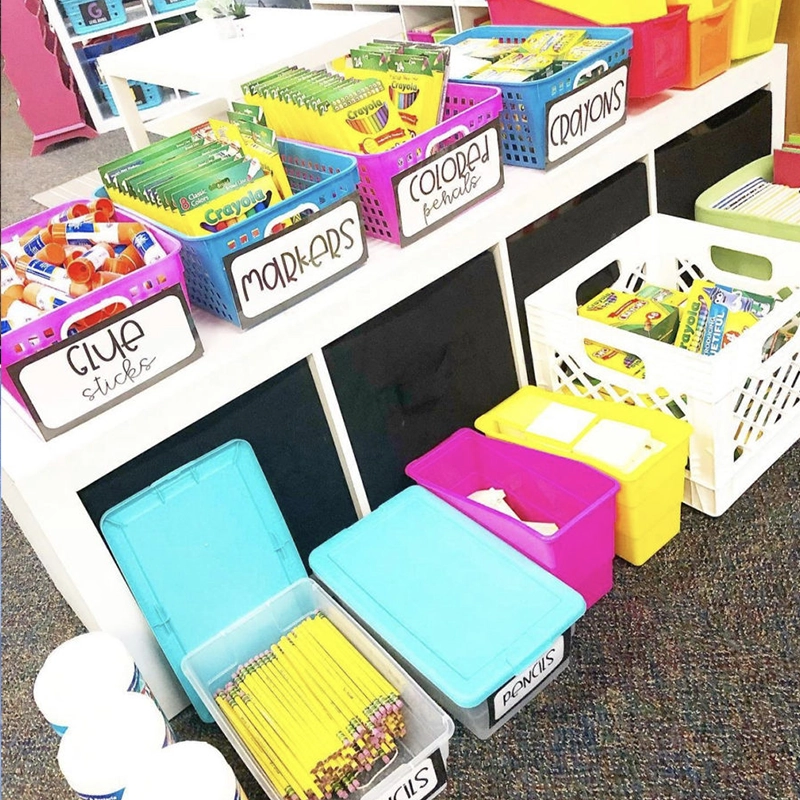

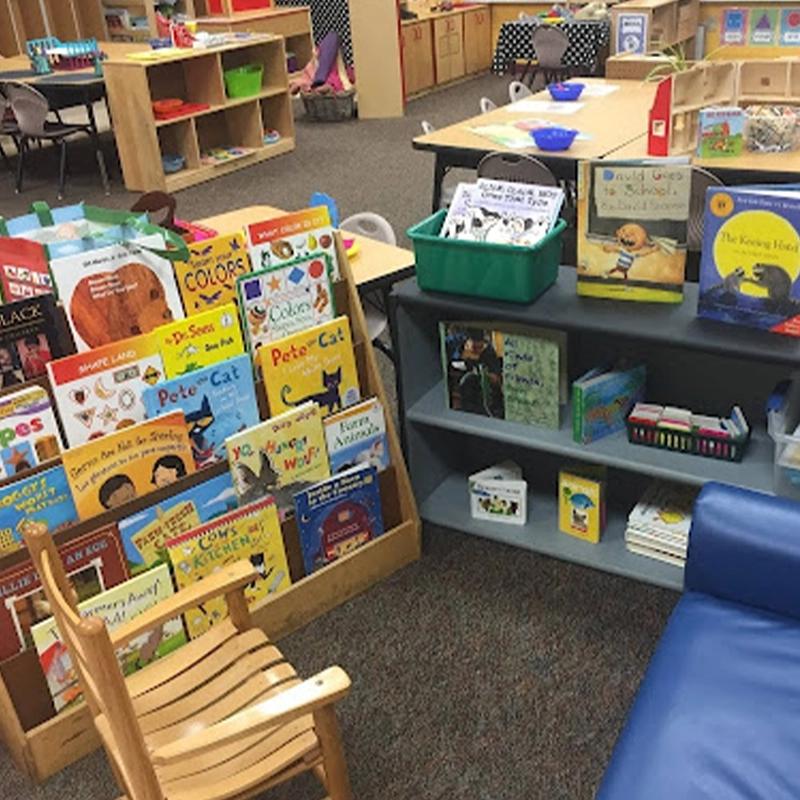
Teacher Must-Have Stationery and Supplies for Kindergarten Classrooms
There’s a prepared teacher behind the scenes for every beautifully organized classroom and smooth-running lesson. Having the right supplies on hand is one of the most practical yet overlooked teacher classroom must haves—especially for new educators juggling multiple responsibilities. These tools don’t just help manage the classroom; they support creativity, communication, and calm.
- Child-Safe Scissors, Glue Sticks, and Crayons
Basic doesn’t mean optional. These tools are used daily for art projects, worksheets, and hands-on learning. Make sure you have enough for group work and that everything is age-appropriate—no sharp tips, no toxic glue. These items top the list of must have classroom supplies in any early learning setting.
- Dry-Erase Boards and Markers
Mini whiteboards are perfect for small group activities, phonics practice, or quick assessments. Keep plenty of low-odor markers in assorted colors. For teachers, a large classroom whiteboard with magnetic backing is a core must-have for a kindergarten classroom.
- Supply Caddies and Trays
Use compartmentalized containers to keep pencils, scissors, and markers organized and mobile. Color-coding by table or center allows for easy cleanup and promotes shared responsibility. These setups are underrated classroom organization must haves that save time and energy.
- Stickers, Stamps, and Reward Charts
Positive reinforcement is easier with small visual incentives. Use stamps for participation, stickers for clean-up, or charts to track behavior goals. These tools are helpful teacher must-haves for classroom management, especially for newer teachers building routines from scratch.
- Teacher Desk Tools and Planning Supplies
A stapler, hole punch, paper clips, tape dispenser, lesson planner, and sticky notes may sound obvious, but missing them can make your whole day harder. Many new teacher classroom must-have lists include these items because they are often overlooked during initial setup.
- Student Folders and Name Tags
Folders labeled by child or day help organize completed work, parent notes, and class forms. Laminated name tags or desk plates reinforce name recognition, classroom routines, and early literacy, making them subtle but powerful must-haves in kindergarten.
When the small stuff is ready, the big stuff flows. With the right supplies, students and teachers can focus on the learning, not the logistics. You can also explore our Preschool Supply List for a printable version of these everyday essentials.
Art Supplies and Creativity Tools for Preschool and Kindergarten Classrooms
Art time in preschool and kindergarten isn’t just about fun—it’s about developing fine motor skills, expression, and problem-solving abilities. A well-prepared creative corner supports child-led exploration while reinforcing key developmental milestones. When setting up your classroom, these art classroom must haves are essential for structured and spontaneous creative learning.
- Crayons, Markers, and Colored Pencils
These basics allow for expression through color, shape, and texture. Choose washable, non-toxic options and include thick-grip crayons for younger students. These are foundational must have classroom supplies used daily across subjects and art time.
- Paints, Brushes, and Palettes
Tempera paints, watercolor trays, and a variety of brush sizes help children explore new textures and blend. Use plastic palettes or paper plates for mixing. Paint is not just for art—it supports sensory development and emotional expression, making it a must-have in preschool classrooms.
- Glue, Scissors, and Craft Sticks
These tactile tools help build hand strength and coordination. Ensure scissors have blunt tips and glue sticks are easy to twist. For open-ended activities, include construction paper, pipe cleaners, and googly eyes—these are the creative staples that appear on every kindergarten classroom must-haves checklist.
- Art Trays and Aprons
Organization matters in messy areas. Use plastic trays to define workspaces and catch spills. Aprons or old t-shirts protect clothes and empower students to create without fear of getting dirty. For classroom organization must haves, this setup keeps the creative space functional.
- Display Boards or Art Drying Racks
Celebrate student work by displaying it. Use cork boards, magnetic strips, or wall clips. For wet projects, a drying rack prevents smudges and keeps things moving. Displays also double as must-have classroom decor that builds student pride and identity.
- Themed Art Bins and Center Rotations
Use labeled bins for seasonal crafts or thematic projects—fall leaves, winter animals, etc. For teachers, especially those managing centers, these are new teacher classroom must haves that save planning time and encourage creativity within structure.
In any early learning classroom—whether preschool, daycare, pre-K, or kindergarten—this creative zone should be clearly defined within the room layout. Position the area near a sink if possible, and use open shelving to let children select materials independently. Teachers can label bins with both pictures and words to help children develop organizational skills while promoting responsibility.
Creative spaces shouldn’t feel like chaos—they should invite exploration with clear boundaries and easy access. When children can see, touch, and try materials freely, learning flows naturally through art.
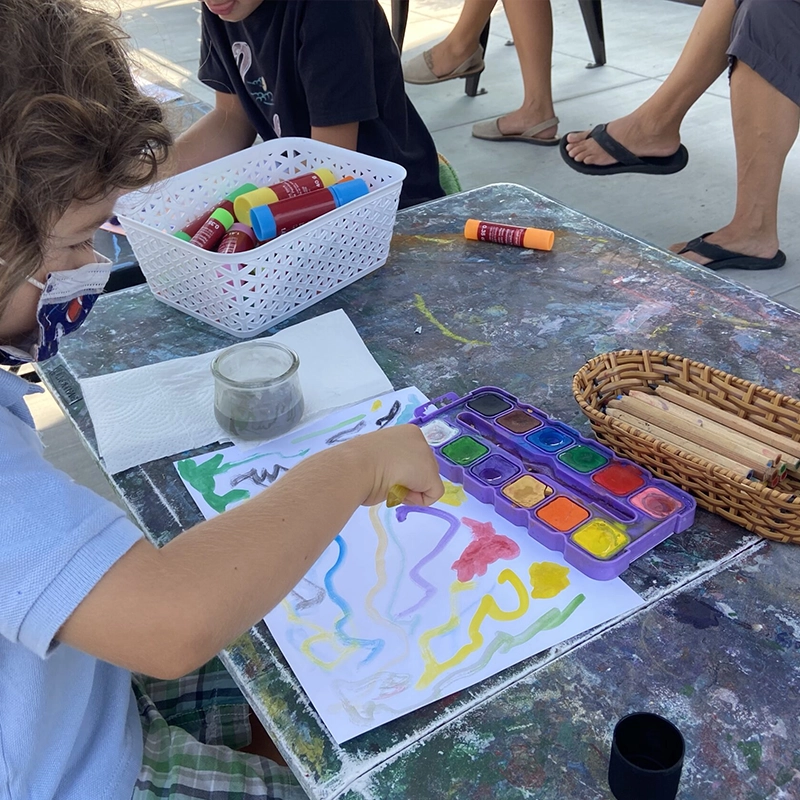
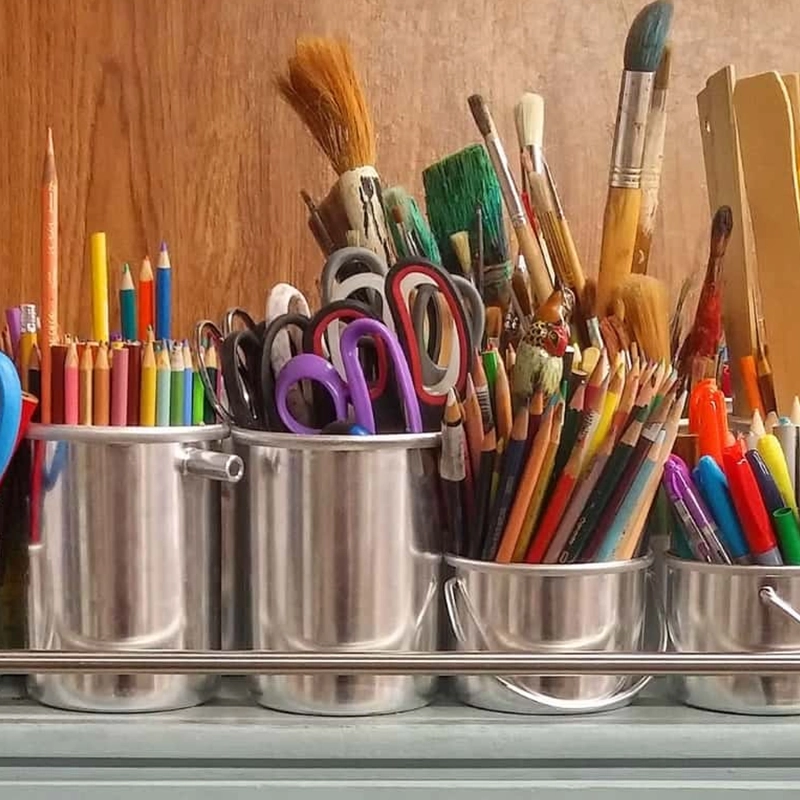
Interactive Learning Tools and Technology for Early Learning Centers
Today’s early childhood classrooms are evolving, and technology is becoming a necessary support, not to replace play and hands-on learning, but to enhance it. When thoughtfully chosen and properly supervised, tech tools help reinforce concepts, personalize learning, and build foundational digital skills. Specific tools have become classroom standards in daycare, preschool, pre-K, and kindergarten environments.
- Interactive Whiteboard or Smart Display
These tools allow teachers to lead group instruction with visual support, whether a letter tracing activity, a counting game, or a digital story. Unlike traditional whiteboards, smart boards can respond to touch, show videos, or display apps, making them a versatile must-have in a kindergarten classroom for group engagement.
- Tablets or Touchscreen Devices
In short, supervised sessions, tablets support literacy, math, and logic games. Pre-installed apps can help with phonics, shape recognition, or vocabulary review. Tablets are beneficial in pre-K classrooms where individual pacing and interaction with multimedia content can make learning more accessible.
- Listening Stations with Headphones
Audio storytelling supports auditory learners and reinforces vocabulary. A listening center with durable headphones and a small library of audiobooks gives children another way to connect with stories, especially in preschool classrooms with developing attention spans.
- Document Camera or Digital Presenter
A document camera allows teachers to model drawing, writing, or even math manipulatives in real time. It is an ideal teacher classroom must-have, especially for large group demonstrations or virtual hybrid settings.
- Visual Timers and Interactive Charts
Simple tech like digital countdown timers helps children transition between activities smoothly. Interactive classroom management tools—like behavior charts displayed on screens—support visual learning and consistent routines across all early childhood classroom types.
Technology doesn’t have to dominate the classroom to be effective. Used wisely, these interactive classroom must-haves enhance core instruction, support diverse learners, and prepare young children for the world they’re growing up in—one where digital literacy is no longer optional but essential.
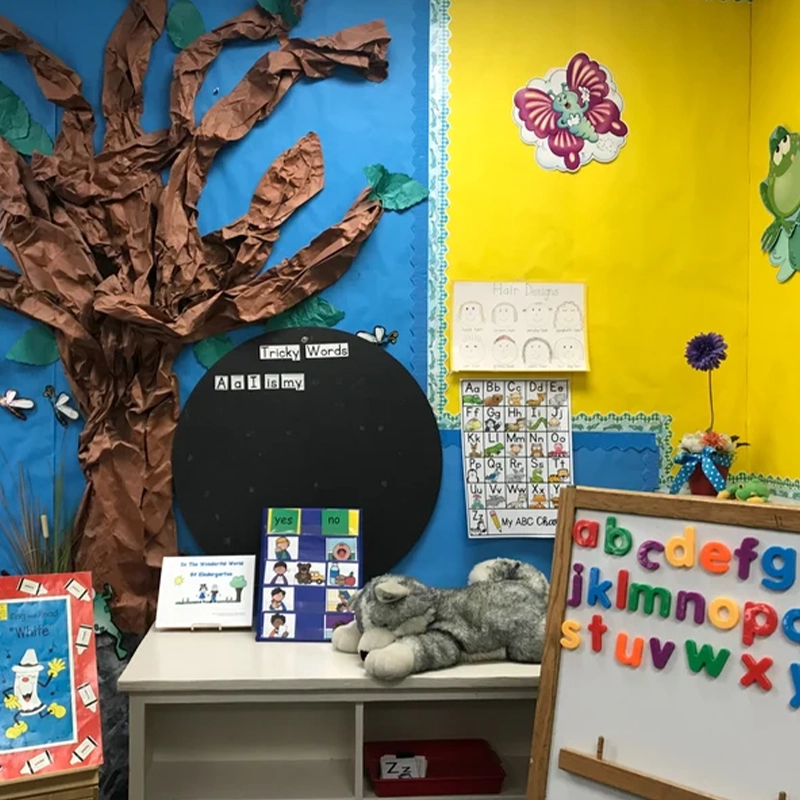
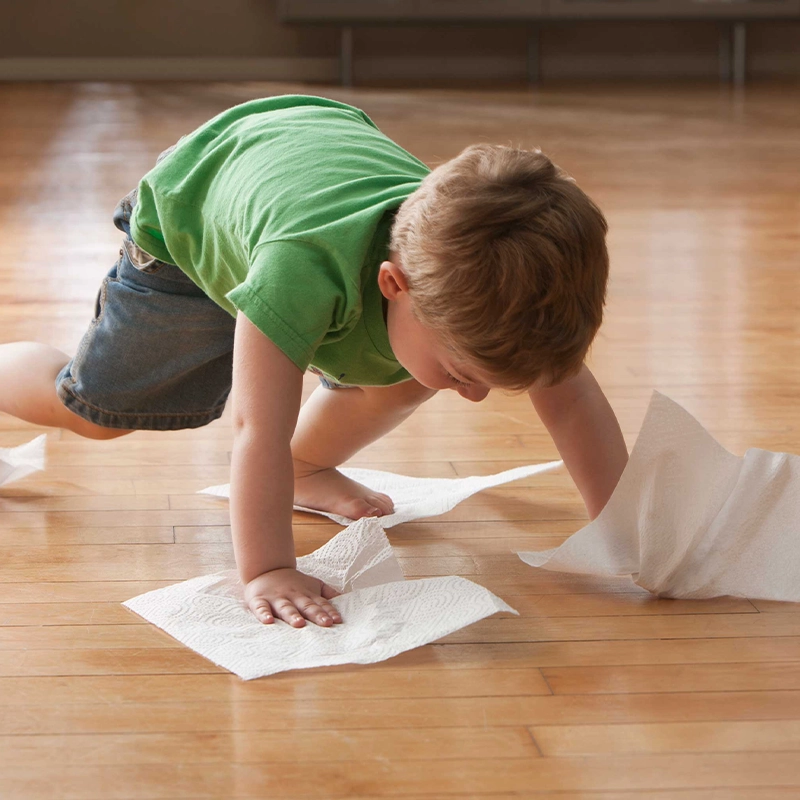
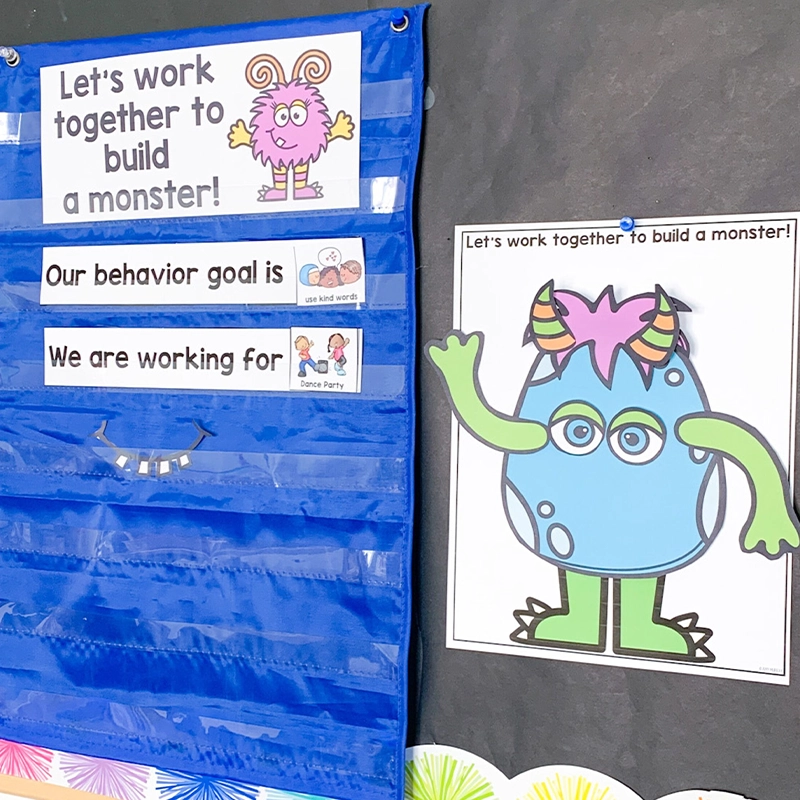
Age-Appropriate Toys and Learning Tools for Kindergarten
In early childhood education, play isn’t a break from learning—it is learning. The right toys and role-play tools help children build social skills, develop problem-solving abilities, and strengthen fine motor coordination. Whether you’re designing a classroom for preschool, daycare, pre-K, or kindergarten, a well-planned play zone filled with purposeful materials is one of the top classroom must haves.
- Building Blocks and Construction Toys
Open-ended toys like wooden blocks, magnetic tiles, and interlocking bricks develop spatial reasoning and creativity. These items allow students to build independently or collaboratively, making them ideal for group learning centers and a standard feature in any must haves for preschool classroom checklist.
- Sorting and Matching Games
Color, shape, and size sorting tools help children classify, compare, and recognize patterns. These are especially valuable in math-focused play areas and belong on every list of kindergarten classroom must haves for early logic development.
- Pretend Play Sets (Kitchens, Doctor Kits, Dress-Up)
These items allow children to act out real-life scenarios, building empathy and communication skills. A simple role-play corner with a play kitchen or doctor’s set is a cornerstone of must haves for a daycare classroom, promoting social learning and emotional growth.
- Fine Motor Manipulatives
Lacing beads, peg boards, snap cubes, and play dough encourage finger strength, precision, and hand-eye coordination. These activities are crucial for preparing children for writing and tool use, and they support the goals of both pre-K and kindergarten classrooms.
- Puppets and Storytelling Props
Puppets allow shy children to speak more confidently, and props make retelling stories interactive. These tools bridge play and literacy, making them useful additions to your reading area or circle time sessions. They are a great example of teacher classroom must-haves that support emotional and language development.
- Self-Guided Play Stations
Set up bins or shelves where children can freely choose activities during center time. Label each with photos and words for easy recognition. These independent learning stations not only develop decision-making skills but are also essential classroom organization must haves for smooth daily routines.
In any early childhood setting, this play zone should be clearly zoned with soft flooring, flexible furniture, and open access to toys. Rotate materials periodically to keep interest high and support different skill sets. Teachers in special education or life skills classrooms may also integrate sensory toys into this space.
Play isn’t just fun—it’s foundational. Educators can build a classroom that balances joy and learning every day by choosing high-quality, purpose-driven toys.
Sports and Physical Play Equipment for Kindergarten and Daycare
Children need to move. Physical activity in the classroom supports gross motor development, self-regulation, and emotional well-being. In daycare, preschool, pre-K, and kindergarten classrooms, a designated space for movement isn’t just nice to have—it’s a must. A well-prepared play area encourages active engagement, safe risk-taking, and joyful group interaction.
- Soft Balls and Bean Bags
Simple and safe, bean bags allow for throwing, catching, rolling, and tossing games indoors. They can also double as seating during group play. Bean bags are classic must-haves in a kindergarten classroom to develop coordination without risk of injury.
- Balance Beams and Stepping Stones
Low, portable balance beams or foam stepping paths help children improve balance, body control, and spatial awareness. These are ideal for pre-K and preschool classrooms with active learners who need movement to stay focused.
- Jump Ropes and Hula Hoops
While great for outdoor play, lightweight versions of these tools are also useful indoors for controlled games. They encourage stamina, rhythm, and teamwork—key elements in daycare classroom must haves.
- Movement Mats and Climbing Blocks
Soft, modular foam mats and climbing shapes allow for safe indoor jumping, crawling, and climbing. These are especially valuable in special education classrooms, where sensory-motor integration is often part of the daily routine.
- Obstacle Course Tools
Use cones, tunnels, rings, and balance pads to create engaging indoor obstacle courses. This promotes critical thinking, planning, and perseverance. For kindergarten students especially, this brings a structured physical challenge into the learning space.
- Music and Movement Materials
Scarves, rhythm sticks, and freeze-dance games integrate music with gross motor development. These items turn transitions and breaks into opportunities for skill-building and energy release—true teacher must-haves for classroom energy management.
Whenever possible, carve out an open corner or roll-out mat area in the classroom for movement activities. For smaller spaces, collapsible equipment or mobile carts with active play tools make it easy to incorporate physical learning into the daily routine across all early childhood education settings.
Movement supports the brain just as much as the body. With the right tools and space, your classroom can become a place where children can jump, spin, stretch, and grow.
Rewards and Positive Reinforcement Tools
Young children thrive on positive reinforcement. In the classroom, rewards aren’t just about prizes—they’re tools for encouraging effort, reinforcing expectations, and building emotional awareness. Whether you’re teaching in a daycare, preschool, pre-K, or kindergarten setting, having simple systems in place to support motivation is one of the most practical and effective teacher classroom must haves.
- Sticker Charts and Star Boards
A classic choice for tracking participation, kindness, or task completion. Visual progress helps children understand goals and stay motivated. Charts can be personalized or group-based and are core must haves for classroom behavior systems.
- Token or Point Systems
Use physical tokens or points for daily behaviors—following directions, sharing, and cleaning up. Children can exchange them for small privileges or prizes. This approach builds responsibility and introduces early math concepts in kindergarten and pre-K settings.
- Mystery Rewards or Prize Boxes
A surprise element adds excitement. Fill a small box with low-cost prizes—erasers, pencils, mini-figures—and let children earn a chance to pick. In preschool classrooms, this works exceptionally well for reinforcing transitions and routines.
- Behavior Bracelets or Certificates
Colorful wristbands or printed certificates can acknowledge moments of kindness, effort, or improvement. These tangible, visible forms of praise are a great way to involve parents and reinforce school-home communication.
- Group Rewards and Class Goals
Encourage collaboration by setting classroom-wide behavior goals, like earning a popcorn party or a special activity. These are valuable must-haves for new teacher classrooms, helping build community and shared expectations early in the year.
- Positive Language Tools and Visual Cues
Simple cards or posters with phrases like “Great job!” or “You’re being a great friend” reinforce a positive classroom tone. These are subtle but powerful must have classroom items that model respectful, supportive communication.
Keep reward systems simple, consistent, and visual. Post behavior expectations and progress in a visible area, and make sure systems are inclusive of all learners—including children in special education or life skills classrooms, who may need adapted goals or supports.
Behavior support should be encouraging, not conditional. When children are seen, acknowledged, and celebrated, they feel safe taking risks, trying again, and growing.
Classroom Rules and Visual Aids
Structure creates security. In early childhood classrooms, communicated expectations—backed by consistent visual cues—help children understand routines, self-regulate, and feel safe. Whether in daycare, preschool, pre-K, or kindergarten, displaying classroom rules and schedules in simple, age-appropriate formats is a fundamental classroom must haves.
- Simple Classroom Rules Posters
Use posters with short phrases and clear images, such as “Use kind words,” “Raise your hand,” or “Walking feet only.” These should be posted at eye level and referred to often. In preschool or special education classrooms, visuals help bridge developmental gaps in understanding.
- Daily Visual Schedules
Display the day’s routine with pictures: circle time, snack, centers, outdoor play, etc. This reinforces time concepts for kindergarten classrooms and helps reduce anxiety during transitions. Velcro or magnetic pieces make it easy to adjust the schedule as needed.
- Transition Cues and Countdown Tools
Signal upcoming changes with picture clocks, sand timers, or visual countdown apps. These are essential must-haves for pre-K classrooms, where children learn time awareness and benefit from gentle structure.
- Voice Level and Volume Charts
Post charts showing expected noise levels in different situations—from whisper voices during reading to playground voices outside. These help children modulate energy levels and are especially useful in daycare or multi-age classrooms.
- Classroom Jobs Charts
Assign roles like line leader, snack helper, or weather reporter. Use name cards and visuals to show responsibilities. These charts foster community, commitment, and pride, making them practical teacher classroom must-haves for daily routines.
- Feelings Charts and Emotion Wheels
Support social-emotional learning with charts that help students identify how they’re feeling. Use faces or emoji-style visuals. These are vital tools for building communication and empathy in life skills or special education classrooms.
These visual aids should be placed in high-use areas—near the entrance, circle time rug, or classroom library. Keep designs simple, consistent, and easy to update. In multi-lingual classrooms, dual-language signs can also be added for inclusivity.
Classrooms run more smoothly when expectations are visual, consistent, and reinforced. Children are more likely to cooperate, not because they fear rules, but because they understand them.
Comfort Items for Rest and Quiet Time in Daycare and Kindergarten
While early learning is full of movement and excitement, children also need time to rest, reset, and regulate. Whether it’s a scheduled nap or a few moments of calm after outdoor play, quiet time areas are essential in preschool, daycare, pre-K, and kindergarten classrooms. Designing a restful corner with the right materials helps children recharge emotionally, physically, and mentally.
- Nap Mats or Low Cots
In full-day programs, soft foam mats or small cots give children a defined space to lie down. Look for options with wipeable surfaces and fitted sheets for hygiene. In daycare and pre-K settings, these are non-negotiable must haves for classroom wellness.
- Pillows and Light Blankets
For comfort and security, lightweight pillows and soft blankets (labeled individually) help children settle more easily. Even in classrooms without naps, these can be used in cozy reading corners or calm-down zones, especially in life skills or special education classrooms.
- White Noise Machines or Soothing Soundtracks
Gentle music, nature sounds, or soft white noise can help signal a transition into rest. Keep volume low and consistent. This tool supports children who struggle with sensory processing and belongs on every list of must haves for daycare classrooms.
- Dim Lighting and Visual Calm Cues
Use lamps, string lights, or curtains to lower the lighting in rest areas. Visuals like “quiet zone” signs or images of sleeping animals help reinforce expectations without speaking—key for preschool environments with developing verbal comprehension.
- Quiet Toys or Sensory Items
Books with soft pages, fidget items, or weighted lap pads offer children something to hold while calming down. Even in kindergarten classrooms without nap time, these items still offer a break from stimulation and help regulate focus and emotions.
- Consistent Rest Time Routine
Use a simple, visual schedule to prepare for quiet time: tidy up, choose a spot, pick one item, and lie quietly. This ritual builds security and predictability, making it a top teacher classroom must-have for rhythm and classroom flow.
Quiet zones should be tucked into corners away from high-traffic areas. Use rugs or shelving to define space, and allow children to signal when they need time to themselves. In inclusive classrooms, this space may double as a sensory regulation area.
Rest is not optional—it’s developmental. Providing a peaceful space teaches children to listen to their bodies and gives teachers a moment to reset the room for the next burst of learning.
Your perfect classroom is one click away!
First Aid Kit and Safety Supplies for a Kindergarten Classroom
Safety isn’t a feature in any early childhood classroom—it’s the foundation. Teachers must be prepared to handle minor accidents, protect children from preventable risks, and create an environment where every student, including those with medical needs, feels secure. Whether you’re setting up a daycare, preschool, pre-K, or kindergarten classroom, these health and safety must haves are essential.
- Fully Stocked First Aid Kit
This should include adhesive bandages, antiseptic wipes, gauze pads, gloves, a digital thermometer, and cold packs. Ensure they’re stored out of children’s reach but easy for adults to access. For teacher classroom must-haves, this is one of the few tools you hope not to use but must always have.
- Emergency Contact Binder
A visible, organized binder (or digital backup) with all student medical info, allergy alerts, and guardian contact details. Post critical allergy info near snack stations or the kitchen. This tool is lifesaving in daycare and pre-K classrooms, where medical conditions often first emerge.
- Childproofing Essentials
Cover outlets, secure tall shelves, and avoid minor choking hazards. Keep cleaning agents in locked cabinets. In special education or life skills classrooms, pay extra attention to sensory-sensitive hazards like sharp edges or flashing lights.
- Sanitation Supplies
Disinfecting wipes, hand sanitizer (teacher use), tissues, and soap refills help stop the spread of illness. Teachers should also maintain a hygiene routine for shared materials. These are everyday must have classroom items in post-pandemic teaching.
- Emergency Drill Visuals and Practice Plans
Use visual cards or posters to guide students through drills (fire, lockdown, earthquake, etc.). Practice monthly, especially in kindergarten classrooms, to build familiarity and reduce anxiety. Mark exits clearly and assigns roles (e.g., line leader, door checker).
- Safety Training and Incident Protocols
Teachers and assistants should be trained in basic CPR and first aid. A simple step-by-step protocol for incident response should be posted. This is an administrative must for new teacher classrooms, as policies vary between centers or districts.
Safety setups should be discreet but present—blending into the classroom’s environment while remaining accessible. For inclusive classrooms, visual safety supports like green/red stop signs or picture instructions can make all the difference.
When children feel physically safe, they’re free to explore and connect. And when teachers are prepared, minor incidents don’t become big emergencies.
Cleaning Supplies for Hygiene in Preschool and Kindergarten
Cleanliness in early learning environments isn’t just about tidiness—it’s about health, safety, and modeling good habits. In preschool, daycare, pre-K, and kindergarten classrooms, children are still learning to manage personal hygiene, and classrooms must be equipped to support that learning while minimizing the spread of germs. These cleaning and hygiene classroom must haves help create a safer, healthier space for everyone.
- Child-Safe Cleaning Products
Use non-toxic, fragrance-free cleaning sprays and disinfectant wipes labeled as safe for use around children. Store them in locked cabinets when not in use. These are among the most essential must have classroom supplies, especially for shared surfaces and high-contact toys.
- Handwashing Stations or Visual Cues
Ensure sinks are accessible and always stocked with soap and paper towels. Where sinks aren’t available, provide teacher-monitored hand sanitizer stations. Post illustrated handwashing guides near every wash area are especially helpful in daycare and pre-K settings where routines are still forming.
- Tissues and Waste Bins
Stock every activity area with tissues and a small trash bin. Make clean-up a part of transitions (e.g., tissue, toss, wash hands). These routines reinforce hygiene and responsibility—key kindergarten classroom must-haves for group settings.
- Individual Supply Bags or Caddies
To reduce germ sharing, assign each child a personal set of high-use items (scissors, crayons, glue) and store them in labeled bags or bins. These are practical teacher classroom must-haves for supporting hygiene in art, writing, and sensory centers.
- Floor Mats and Wipeable Surfaces
Use washable rugs and vinyl mats under messy areas (e.g., art, snacks, water tables). Choose furniture with wipe-clean finishes. These elements are essential for classroom organization and support quick sanitizing routines between activities.
- Weekly Deep Cleaning Schedule
Create a classroom sanitation routine that includes wiping tables weekly, disinfecting toys, and laundering soft items regularly. A checklist in new teacher classrooms prevents important tasks from being missed during busy weeks.
Consider involving children in simple cleaning tasks to promote ownership—wiping tables, putting items in a bin, or returning caddies. Use visual charts to show “we all help keep our classroom clean.”
A clean classroom isn’t just for show—it protects health, supports independence, and models lifelong care habits and respect for shared space.
Classroom Must Haves by Age Group
Setting up a classroom varies depending on the age group you’re supporting. Below is a quick-reference chart comparing essential classroom must-haves across early learning stages—from infant care to elementary readiness. Use it to plan, prioritize, and personalize your classroom setup.
| Age Group | Educational Stage | Typical Classroom | Key Must-Haves | Target SEO Keywords |
|---|---|---|---|---|
| 0–2 years | Infant/Toddler | Infant Room / Toddler Room | Learning centers, role-play zones, basic literacy toys, and creative stations | infant classroom must haves, toddler classroom must haves |
| 2–3 years | Early Preschool | Toddler or Early Preschool Room | Simple manipulatives, picture-based labels, emotional cues, secure storage | toddler classroom must haves, early preschool classroom must haves |
| 3–4 years | Preschool / Pre-K | Preschool Classroom | Learning centers, role-play zones, basic literacy toys, creative stations | preschool classroom must haves, pre k classroom must haves |
| 4–5 years | Kindergarten | Kindergarten Classroom | Structured group seating, classroom rules displays, skill-focused tools | kindergarten classroom must haves |
| 5–6 years | Transitional Kindergarten / 1st Grade Prep | K/1 Bridge Class | Early literacy materials, independent work bins, emotional regulation tools | 1st grade classroom must haves, transitional kindergarten must haves |
| 6–8 years | Lower Elementary (Grades 1–2) | Elementary Classroom | Desk systems, subject-specific visuals, partner task zones, anchor charts | 2nd grade classroom must haves, elementary classroom must haves |
| 8–10 years | Upper Elementary (Grades 3–5) | Upper Elementary Classroom | Organized libraries, math manipulatives, tech integration, flexible seating | 3rd grade classroom must haves, 4th grade classroom must haves, 5th grade classroom must haves |
| 10–12 years | Middle School Start (Grade 6) | Transitional / Self-Directed Learning Room | Individual storage, goal trackers, digital devices, subject-specific displays | 6th grade classroom must haves, middle school classroom must haves |
Conclusion
Creating an effective kindergarten classroom requires careful planning and a good selection of must-have items that cater to children’s physical, emotional, and educational needs.
- Choosing Durable and Safe Must-Have Supplies
Choose high-quality supplies that are durable and designed for children. Investing in sturdy furniture, reliable storage, and quality learning tools ensures your classroom is well-equipped for the school year. Durable materials also reduce the need for frequent replacements, saving time and budget.
A clean, organized classroom creates a focused learning environment and reduces stress for both teachers and children. Regular cleaning, labeled storage, and designated areas for different activities make the classroom efficient and enjoyable.
By incorporating these kindergarten classroom must-haves, teachers can create a safe, engaging, and nurturing classroom. This well-rounded approach ensures children have the tools and environment to explore, learn, and grow confidently.
FAQs
What are the absolute kindergarten classroom must haves for new teachers?
Start with child-sized furniture, basic art supplies, a first aid kit, and simple organization systems. Stickers, visual charts, and daily routines are essential for managing behavior and transitions smoothly.
How can I organize a small preschool classroom efficiently?
Use open shelving, labeled bins, and multipurpose furniture like storage benches. Define zones clearly using rugs or visual cues, and keep traffic patterns simple.
Are these classroom must haves suitable for both daycare and pre-K?
Yes. Though quantities and time blocks may vary, all the tools and zones mentioned in this guide apply across preschool, daycare, pre-K, and kindergarten settings.
Do I need technology in a kindergarten classroom?
While not mandatory, simple tech like tablets, whiteboards, or visual timers can enhance instruction and classroom management. Use tech intentionally and always under teacher guidance.
What safety supplies should every classroom have?
A stocked first aid kit, emergency contact binder, sanitation supplies, and childproofing tools are non-negotiable. Post emergency protocols clearly and practice drills regularly.
How can I incorporate sensory or calm-down spaces in my classroom?
Use soft lighting, quiet toys, weighted items, and visual cues. These areas benefit all students, especially those in inclusive or special education settings.

